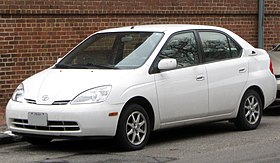Peak gasoline demand looms with engine efficiency gains
WoodMac now projects demand peak for gasoline in 2018 for US and in 2021 for globe. They note that use of batteries in vehicles is key to increasing efficiency. WoodMac is an industry analytics house, so their outlook tends to be quite favorable to attracting capital to the oil and gas industries. So with that bias in mind, I think this is quite a serious move to project a peak so early. They must really see things moving quickly that they do not want their credibility within the industry to suffer for missing an important event like peak demand for gasoline.
That said, this article is still pushing the narrative that diesel has much longer to go before peaking. There is a view that somehow EVs are limited to displacing only light gas powered vehicles.
"We still see global oil demand growing but the role of
transportation shrinks," Gelder said.
Growth will be driven by the petrochemical sector, which
uses oil feedstocks to produce plastics, as well as demand for
diesel and gasoil from the commercial transportation sector,
particularly buses, ships and planes, he added.
The oil industry seems to be moving through the stage of grief. Having passed through denial and anger, now they show signs of bargaining. What I see is a willingness to accept that gasoline demand may be declining, but they still hold out for petrochemicals and diesel. So there is this mythology that trucks, buses, ships and planes cannot be electrified. In reality buses are at immanent risk of full electrification as we have discussed. Trucks are next in line. Ships are moving toward hybrid drivetrains and possibly LNG as a fuel. Electric planes are probably furthest out developmentally, but hey hydrogen is the most energy dense fuel there is. And of course, natural gas liquids are super feedstock for petrochemicals, so there is no need for crude to trade at a huge premium to natural gas when all that is left is petrochemicals and cheap BTUs. So the industry seems to be negotiating for a new future. "Hey, the transportation sector will shrink, but we still have other markets to grow in." It's a long journey to acceptance.
So the battery is undermining virtually all uses of oil, save as asphalt and tar. Even in petrochemicals, batteries will enable solar and wind to continue to drive natural gas out of the power and heating markets which leaves a surplus to compete in the petrochemical feedstock market, along with agricultural feedstock I might add. The question oil econometricians should be asking is what are the most profitable applications for batteries. As the Gigafactories of the world scale up, these batteries will seek out the most profitable niches to penetrate first. So this means that the most profitable petroleum products may well be the most vulnerable to disruption. The volumetric framing around crude is very misleading. Batteries will seek out the most vulnerable profits derived from oil and gas and deflate those first. BTW the next generation of biofuels and bio sourced materials will do the same. So from every conceivable angle technologies will erode profit margins for petroleum products. Once you take away the need for massive quantities of transport fuels, there may be little profit left calling up crude. At the very least, refineries are going to need to get much more sophisticated around synthetic chemistry. If the profitable market for crude comes down to jet fuel, plasticizers and asphalt, what do refiners do with rest of the barrel? So synthetic chemistry, which can convert any hydrocarbon into any target molecule, will be needed to correct the imbalance. But this synthetic chemistry is fairly agnostic to feedstock be it crude, natural gas or renewable organic sources. The analogy that comes to mind here is beef. If there was not a market for fine cuts of beef, then a cow would only be worth ground beef. But if there was not even a market for ground beef, but simply fats, sugars and proteins that can be rendered into feedstock for making plastic, then would ranchers even bother to raise beef at all. Cattle ranching only makes sense if consumers actually want to eat beef. In a completely vegan culture, there is no cattle market (except perhaps as an object of worship). So point here is that if crude oil is reduced to simply being a chemical feed stock and not consumed as a combustible fuel, will crude oil lose its reason for being? That is a long, long path from where we are right now, but that path beings with eroding the most profitable cuts of oil first. So oil econometricians need to get a view on how profit erosion will proceed.
The big question for oil is, after demand for gasoline peaks, how does the oil industry remain profitable? Saying, hey, there'll still be lots of demand for crude, is still way deep in denial.



